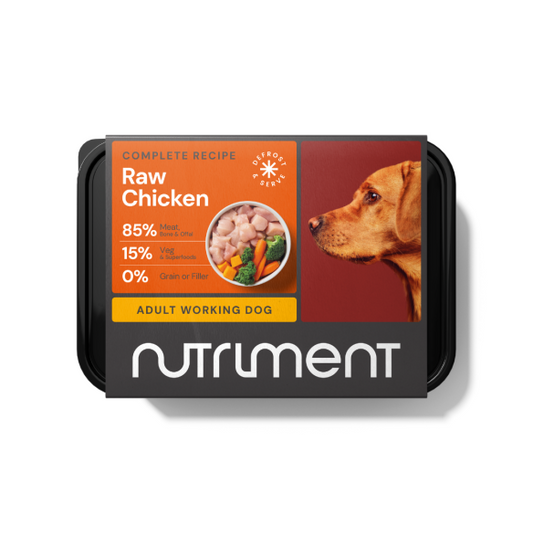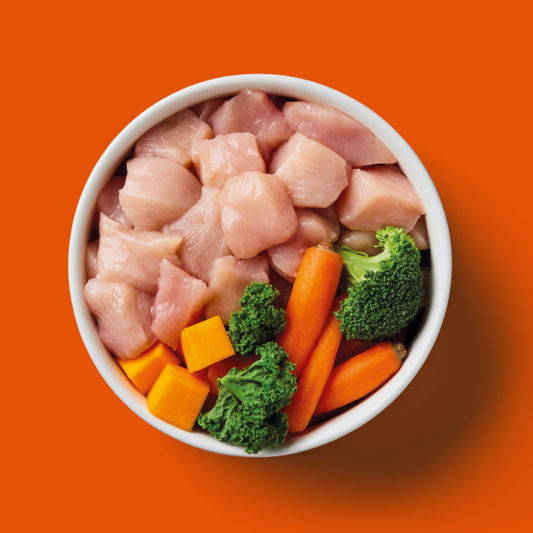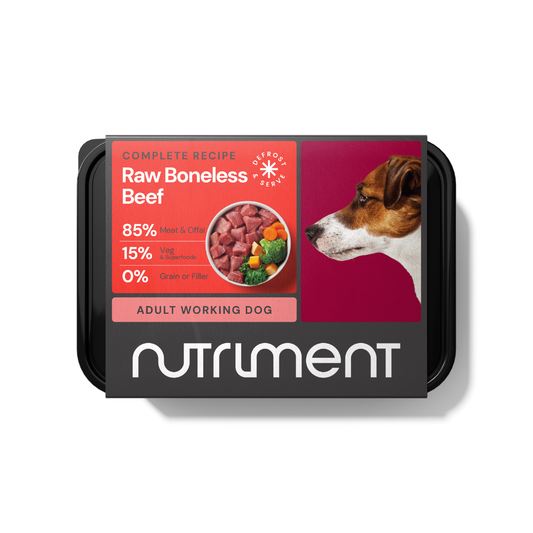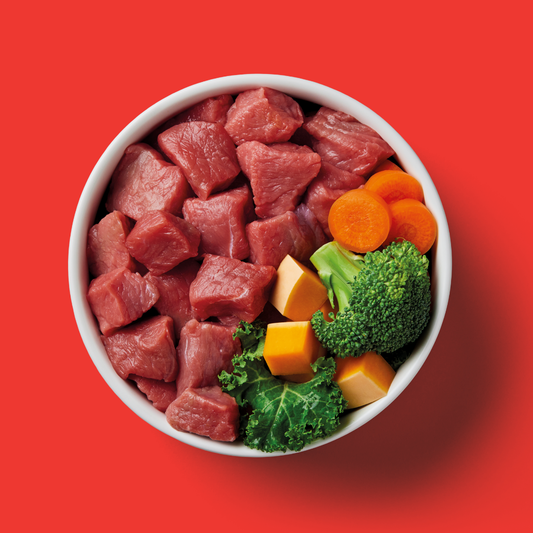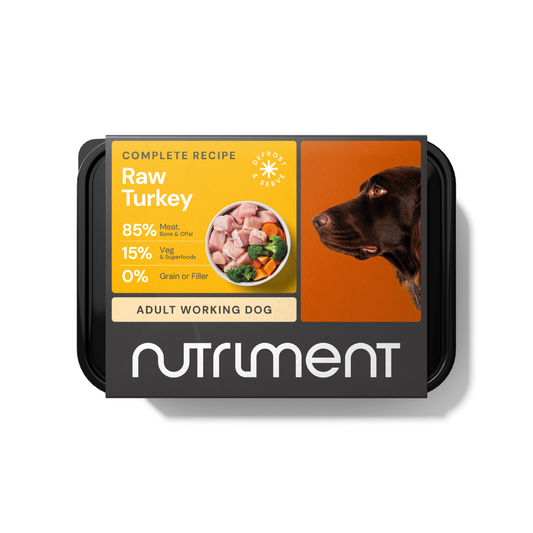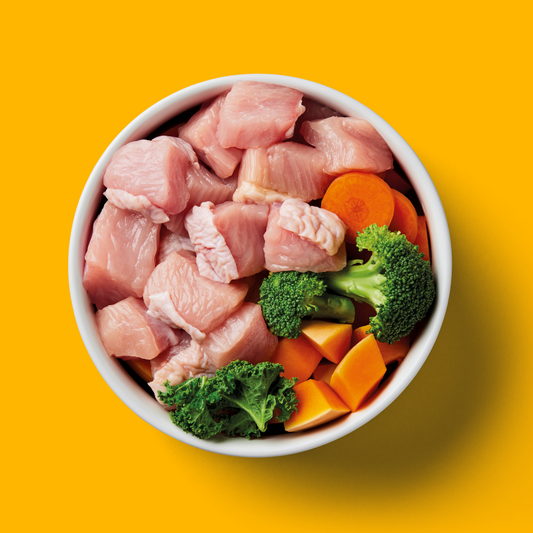
Shopping Basket (0)
Total Weight
0.0 kg
Order Total
£0.00

1. How much to feed?
Getting your puppy on a raw puppy food diet is perhaps the best health investment you can make; both long and short term. It is of extreme importance to feed the correct nutrients in order to support healthy growth.
For many, changing a puppy to a raw diet comes with questions; When can I feed a meaty bone? Why does my puppy not eat? Etc… Below we list some of the common queries our nutritional advisers at Nutriment deal with on a regular basis.
Puppies need a lot of food! We recommend feeding 6% of their current body weight. This means to weigh your puppy regularly.,Always bear in mind that ALL puppies are different, some need more, some less so keep a close eye how your puppy is looking. Puppies shouldn’t carry excess weight but do need to have enough fat to allow for their growth spurts. Equally, don’t keep your puppy too lean – you should not be seeing ribs.,Stay flexible and don’t fall into the trap of comparing your puppy to their littermates. All puppies are individuals and will grow at their own pace and size – like with humans it’s unlikely you grew exactly the same as your sibling or parents.
It’s a good idea to first let your puppy get accustomed to a raw minced diet first for a few weeks. After 2 – 3 weeks of having been fed, for example, our puppy formula, start thinking of trying a chicken wing. Always supervise when you give meaty bones of any kind. Sometimes it can help to hold the wing whilst your puppy can chew it gently. It is best to follow this up with a boneless meal, for example, some Beef formula.
Our puppy food is for young puppies from 6 weeks. We also have a Weaning Paste for 3-6weeks. Our puppy formula is ground finely. At around 3 months we recommend you start introducing new proteins eg Turkey formula, Beef Formula and Lamb Formula (click here for the range).
As with any change, do it slowly – mix some of the Puppy food with the food you are introducing initially.
This generally can happen when puppies are teething, self-regulating or going through hormonal changes.
When puppies are teething it can be a good idea to offer food a little sloppier by adding lukewarm water to the food. This also releases the smells and flavours more without cooking away any nutrients.
If your puppy is in the phase of needing to really chomp then offering food frozen in a stuffable toy is a brilliant way to feed. Another idea is to make to make bone broth from our marrow bones and soak an old tea towel in it, wring it out, tie a knot, freeze and serve frozen – so they can mouth it, cooling their gums.
Self-regulating; many dogs will start to self-regulate around 5-6 months. This is when you will want to drop 3 meals times to 2. Many will indicate this by not eating the third meal.
Finally, all dogs go through hormonal changes; for bitches, this is around the 6 months and for dogs around 8th months. It’s quite common for dogs to go off their food at this age. You can make food a bit more appealing with a little bone broth.
Read our “Fussy Eaters” article with further hints and tips.
Once your puppy is no longer growing in height that’s when you slowly reduce the food and start feeding your puppy as an adult, which is around 2-3%.
